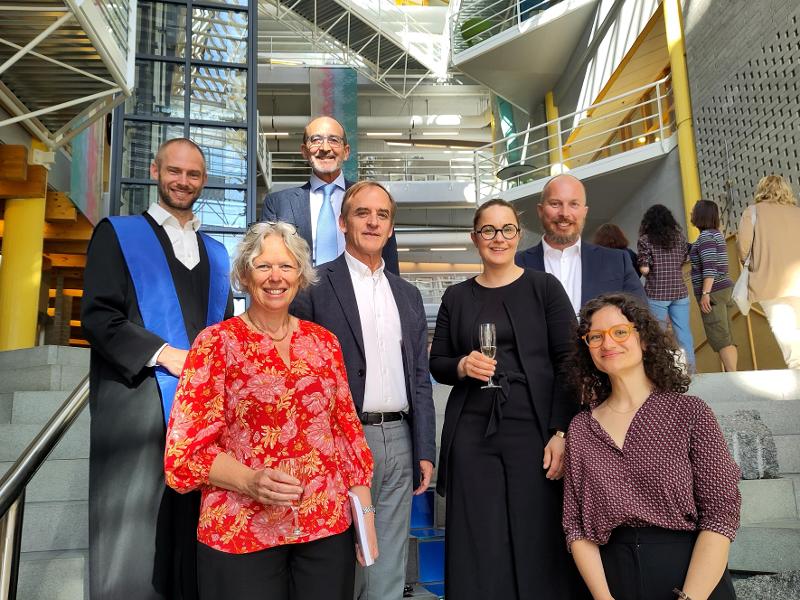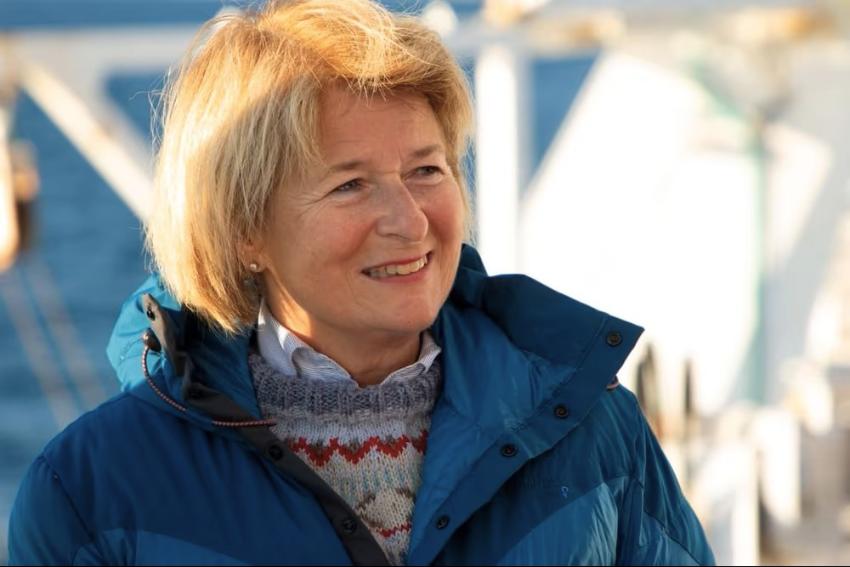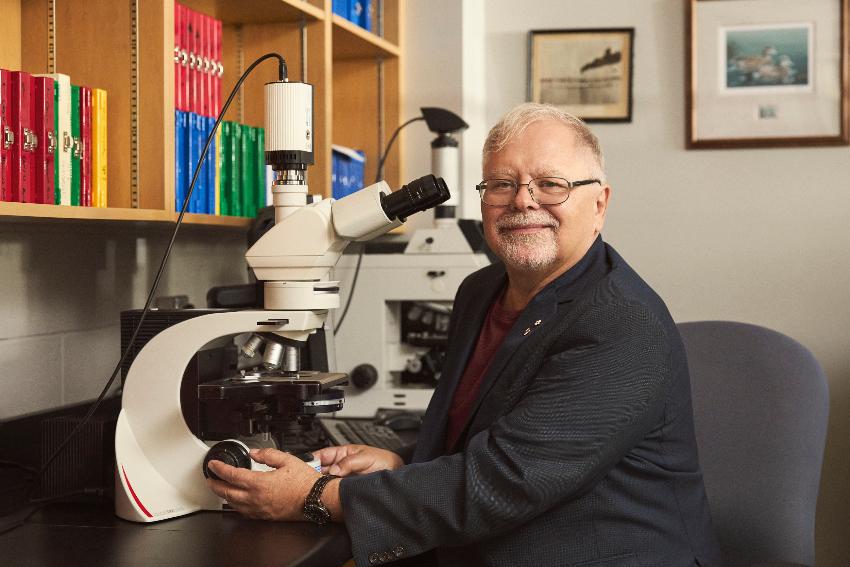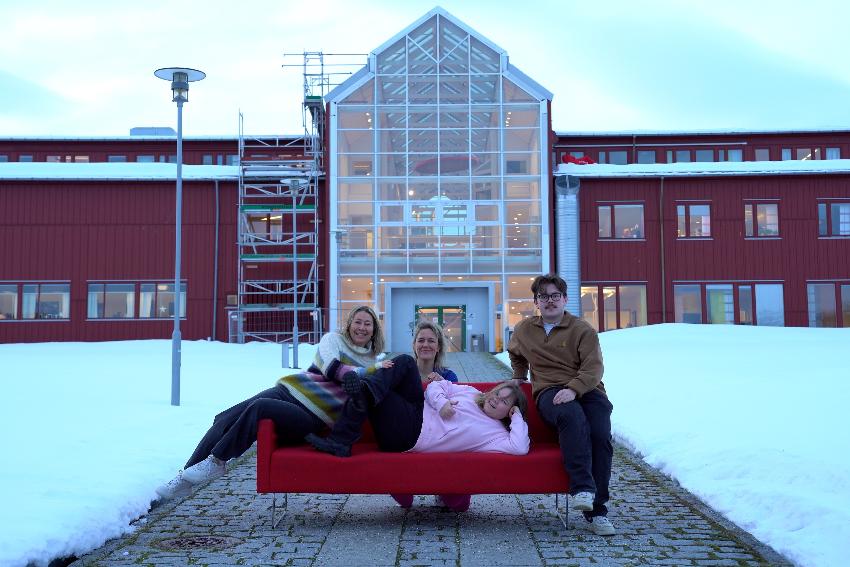The ocean carbon pump connects the open water and sea floor
How tightly are the realms of the open water and the sea floor connected in the Atlantic sector of the Arctic, and what does it mean for sea floor communities? PhD, Dr. Yasemin V. Bodur set out on her doctoral journey to find out.


She studied past and present seafloor communities in northeast Greenland related to changing sea ice cover, seasonal changes in sinking organic matter in the Barents Sea, and particle aggregation and transformation in the sub-arctic Ramfjorden. By coupling the sea floor to above water processes, the ecosystem to biogeochemistry, and the dissolved pools of carbon to the particulate ones, it is safe to say that Yasemin has used a diverse toolbox to increase our understanding of the many processes of the biological carbon pump.
Now that you are at the end of your PhD journey, what experiences will especially remain with you in the years to come?
I have had so many experiences, it is hard to mention them all in one go. I think the best experience of the PhD (and probably any PhD in marine ecology) is the variety of work tasks (fieldwork, lab, reading, writing, conferences/talks), and your own independence (which is also a challenge). I think I am most proud of our Ramfjorden project, as we have completely designed and carried it out by ourselves in a little PhD group. To see it through all the way, from just an idea to a finished and submitted paper, has made me very proud. The other thing I am proud of is that I learned how to deploy sediment traps (arrays of cylindrical tubes that catch sinking particles in the water column over 24-hours), as I would have never believed that I would be able to handle such heavy and body-labor intensive equipment during all seasons in the harsh Arctic environment.

What were the most exciting findings of your PhD thesis and did you get any unexpected results?
The most exciting results for me were the results from the Ramfjorden project. I was most excited about them because it was our own project we had designed. We also got the most unexpected results from these experiments: we knew that aggregation or assembly of dissolved molecules happen all the time, and that we still can measure particulate (>0.7um) carbon from filtered water (where theoretically only dissolved compounds should be present). We didn’t know how this aggregation potential of dissolved material can change seasonally, as (as far as we were aware of) there were no studies about this. Accordingly, we expected to find aggregation during the productive period (spring until autumn). In winter however, when the marine ecosystem in Ramfjorden is least productive, we measured decreased particulate carbon on the filters. In addition to that, while the lability (biological availability) of dissolved organic matter decreased in the productive period, most likely due to biological degradation, on the contrary the lability of the material increased during winter. This has not been shown before for dissolved organic matter, and we were surprised to see such contrasting results affecting both the dissolved and the particulate fraction during the winter vs the productive period.
How does the future look? What do you hope to work with following your PhD?
In the short run, I would like to finish up some papers I have started, for example getting the third paper of my thesis published which is currently under review, and finishing up another paper that I have started to write. If I can stay in science, I would like to develop my own project idea and try to get funding for it. Otherwise, I would be interested in doing something in between natural and social sciences as I think valuable connections can be made between the fields.
Dr. Yasemin Vicdan Bodur’s thesis was entitled “Aspects of the biological carbon pump in the Atlantic sector of the Arctic: Aggregation, vertical flux and pelagic-benthic coupling”, and was supervised by Professor Marit Reigstad (UiT The Arctic University of Norway) and Dr. Paul Renaud (Akvaplan-niva).
-
Fiskeri- og havbruksvitenskap - bachelor
Varighet: 3 År -
Fiskeri- og havbruksvitenskap - master
Varighet: 2 År -
Akvamedisin - master
Varighet: 5 År -
Bioteknologi - bachelor
Varighet: 3 År -
Arkeologi - master
Varighet: 2 År -
Peace and Conflict Transformation - master
Varighet: 2 År -
Geosciences - master
Varighet: 2 År -
Biology - master
Varighet: 2 År -
Technology and Safety - master
Varighet: 2 År -
Physics - master
Varighet: 2 År -
Computational chemistry - master
Varighet: 2 År -
Law of the Sea - master
Varighet: 3 Semestre -
Biologi - bachelor
Varighet: 3 År -
Nordisk - årsstudium
Varighet: 1 År -
Luftfartsfag - bachelor
Varighet: 3 År -
Pedagogikk - bachelor
Varighet: 3 År -
Arkeologi - bachelor
Varighet: 3 År -
Likestilling og kjønn - årsstudium
Varighet: 1 År -
Historie - bachelor
Varighet: 3 År -
Geovitenskap- bachelor
Varighet: 3 År -
Kjemi - bachelor
Varighet: 3 År -
Samfunnssikkerhet - bachelor
Varighet: 3 År -
Samfunnssikkerhet - master
Varighet: 2 År -
Kunst - bachelor
Varighet: 3 År -
Kunsthistorie - master
Varighet: 2 År -
Religionsvitenskap - årsstudium
Varighet: 1 År -
Romfysikk, sivilingeniør - master
Varighet: 5 År -
Klima og miljøovervåkning, sivilingeniør - master
Varighet: 5 År -
Sosialantropologi - bachelor
Varighet: 3 År -
Bærekraftig teknologi, ingeniør - bachelor
Varighet: 3 År -
Historie - master
Varighet: 2 År -
Filosofi - bachelor
Varighet: 3 År -
Anvendt fysikk og matematikk, sivilingeniør - master
Varighet: 5 År -
Barnevernsarbeid - master
Varighet: 2 År -
Forfatterstudium 2 - årsstudium
Varighet: 1 År -
Fine Art - master
Varighet: 2 År -
Barnevern - bachelor
Varighet: 3 År -
Arctic Nature Guide - one year programme
Varighet: 1 År -
Sosialt arbeid - bachelor
Varighet: 3 År -
Arktisk friluftsliv og naturguiding - bachelor
Varighet: 3 År -
Arktisk friluftsliv - årsstudium
Varighet: 1 År -
Grunnskolelærerutdanning for 1.-7. trinn - master
Varighet: 5 År -
Kunsthistorie - årsstudium
Varighet: 1 År -
Vernepleie - bachelor
Varighet: 3 År -
Internasjonal beredskap - bachelor
Varighet: 3 År -
Barnevern - bachelor
Varighet: 3 År -
Vernepleie - bachelor (deltid)
Varighet: 4 År -
Landskapsarkitektur - master
Varighet: 5 År -
Grunnskolelærerutdanning for 5.-10. trinn - master
Varighet: 5 År -
Kvensk og finsk - bachelor
Varighet: 3 År


